Featured D&D 5e Wizard Multiclass art is “Wizard on a bike” by SpikedMcGrath. Creative Commons License.
This article contains affiliate links that add gold to our coffers.
Welcome to Flutes’ exhaustive guide on D&D 5e Wizard multiclass character builds. Multiclassing is a daunting concept for new players to learn. Mastering it is rewarding for experienced players. Many classes benefit more from multiclassing than investing all twenty levels in themselves. Aside from optimization, multiclassing allows you to build interesting concepts for unique characters with outside-the-box specialties. Multiclassing can be useful for roleplaying, so do not think this guide is only for min-max-style players.
My multiclassing terminology:
- Core Class: The main class for a character. It accounts for the majority of a character’s level investment.
- Secondary Class: The class that is supplementarily added to the core class.
- Dipping: Multiclassing very few levels into a secondary class.
- Twinning / Twincasting: Allowing a spell to target multiple targets when it normally targets one.
I’m analyzing the Wizard class as core and secondary within a multiclass build. The Wizard is a fairly self-contained class, especially since few others rely on the Intelligence score (Eldritch Knight Fighter and Arcane Trickster Rogue). The Artificer class has opened up the Wizard to more multiclassing possibilities, which you’ll notice in my recommendations. The Psi Warrior Fighter is another notable addition to the game that uses Intelligence.
Cast Misty Step to Specific D&D 5e Wizard Multiclass Tips:
Abjuration
Bladesinging
Chronurgy
Conjuration
Divination
Enchantment
Evocation
Graviturgy
Illusion
Necromancy
Order of Scribes
Transmutation
War Magic
D&D 5e Wizard Multiclass Help
The primary considerations when multiclassing with a Wizard are the following (and you can read more about these concepts in our popular multiclassing combinations article):
Wizard Multiclass: Armor
Can you improve your defenses by gaining armor proficiencies? Multiclass early if you can quickly improve your durability.
Wizard Multiclass: High-Level Features
Do you mind omitting the Wizard’s high-level abilities? Signature Spells can easily be passed over since it essentially grants two extra spell slots and spells to prepare. The Ability Score Improvement is fine to miss if you’re gaining something better than a feat. I’m hesitant to miss Spell Mastery; that ability is handy. Some subclasses can use it synergistically with their Arcane Tradition abilities to treat two low-level spells like cantrips. You should also consider if your campaign will even go to level twenty. Wizard subclasses get their capstone abilities at level fourteen, allowing a Wizard to be multiclassed without skipping Arcane Tradition features.
Do you want to ensure your Wizard levels are high enough to get ninth-level spells? Multiclassing with another spellcasting class may give you ninth-level spell slots, but not necessarily ninth-level spells from either class spell list.
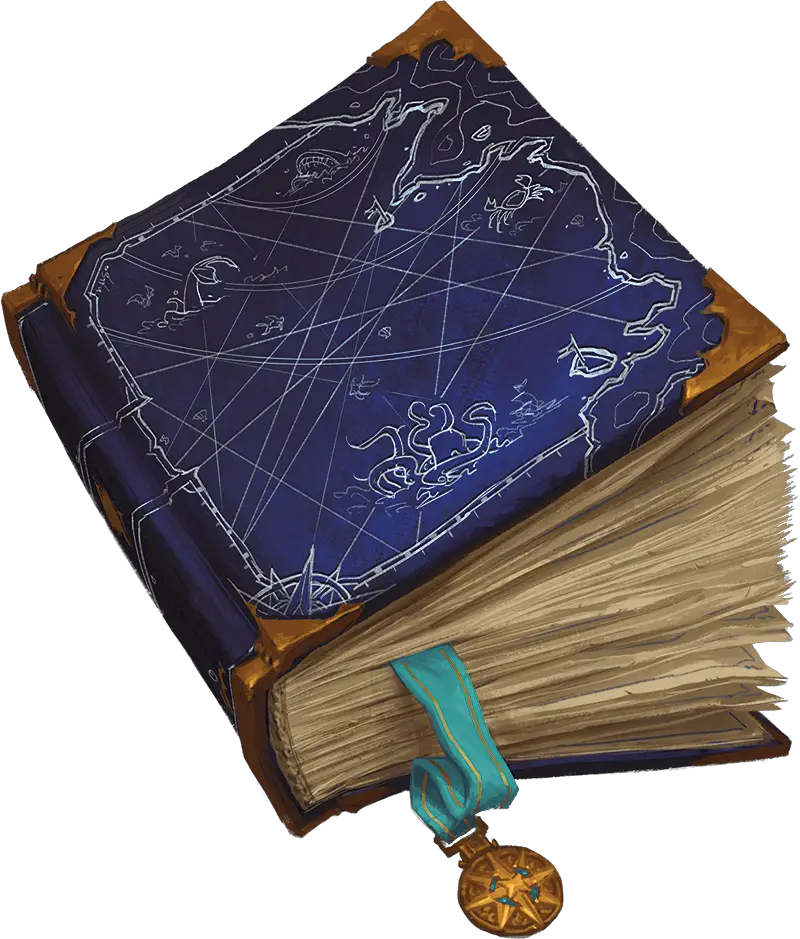
Wizard Multiclass: Timing
Should you multiclass early or late in your campaign? I recommend multiclassing early as a Wizard. You may start the campaign as a different class to improve proficiencies and hit points. Multiclassing early will be especially important in a campaign that will end sooner.
You should consider the level your Wizard is expected to obtain in your campaign. Is the campaign ending at level ten, for example? My recommendations are based on hitting level twenty. Campaigns that end earlier (sometimes much earlier) will require different multiclassing practices. Short campaigns probably shouldn’t involve multiclassing because you won’t see your coolest tricks enabled when finished.
Wizard Multiclass: Effectiveness and Synergy
How well does your subclass synergize with other classes and subclasses? I recommend reading my article on Wizard Arcane Tradition ratings. Wizard Arcane Traditions vary in their potency, so I recommend reading that article to prepare your understanding of why my multiclass recommendations are what they are.
Consider these points, and you’ll do well with your characters’ multiclassing builds.
Wizard Multiclass D&D 5e Requirements
Don’t forget that multiclassing requires minimum ability scores in both new and prior classes (as described on page 163 of the PHB, or page 10 of TCoE for Artificers). For example, Wizards multiclassing with the Rogue class need 13 Intelligence and 13 Dexterity. The Multiclassing Proficiencies table is on page 164 of the PHB (or page 10 of TCoE for Artificers).
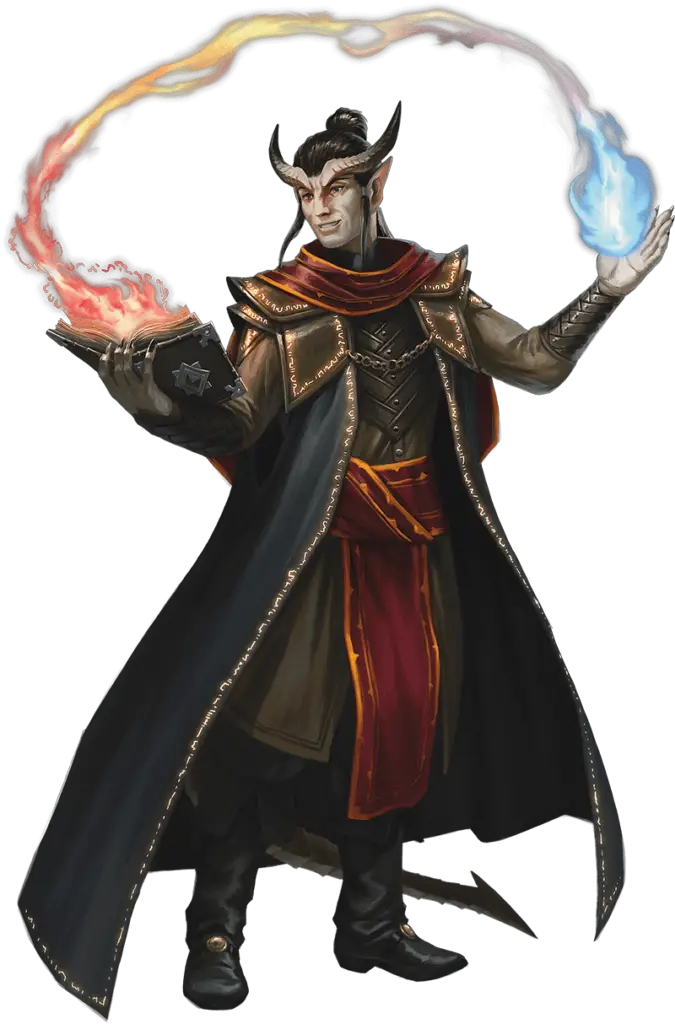
Here is a summary of class ability score minimums for multiclassing, along with proficiencies gained if a given class is not the class you started with at level one:
- Artificer – Intelligence 13: light/medium armor, shields, thieves’ tools, tinker’s tools.
- Barbarian – Strength 13: shields, simple weapons, martial weapons.
- Bard – Charisma 13: light armor, one skill of your choice, one musical instrument.
- Cleric – Wisdom 13: light armor, medium armor, shields.
- Druid – Wisdom 13: light armor, medium armor, shields (druids will not wear armor or use shields made of metal).
- Fighter – Strength 13 or Dexterity 13: light armor, medium armor, shields, simple weapons, martial weapons.
- Monk – Dexterity 13 and Wisdom 13: simple weapons, shortswords.
- Paladin – Strength 13 and Charisma 13: light armor, medium armor, shields, simple weapons, martial weapons.
- Ranger – Dexterity 13 and Wisdom 13: light armor, medium armor, shields, simple weapons, martial weapons, and one skill from the class’s skill list.
- Rogue – Dexterity 13: light armor, one skill from the class’s skill list, thieves’ tools.
- Sorcerer – Charisma 13: no additional proficiencies.
- Warlock – Charisma 13: light armor, simple weapons.
- Wizard – Intelligence 13: no additional proficiencies.

D&D 5e Wizard Multiclass Capstones and Flavor
Level-twenty class features vary in their value. Consider your core class’s capstone ability when considering multiclassing. It would be best if you also considered your campaign’s expected level threshold; after all, most campaigns end by level ten.
You may find it challenging to narrate how and why your character is gaining new skills from multiclassing. Players typically do not foreshadow their core class features, so it needn’t be a hassle to justify multiclassing narratively, either. You could treat the multiclassing as a mere mechanical change. Pretend your core class has something different about it that is justified by multiclassing.
I’ll now proceed through every Wizard subclass to summarize what each Arcane Tradition offers and needs from multiclassing. Examples of multiclass-character concepts are included. A handful of my examples are based on coolness rather than effectiveness.
Let’s proceed in alphabetical order!
Abjuration D&D 5e Wizard Multiclass (PHB)

Psi Warrior (18) / Abjuration Wizard (2)
The Arcane Ward of the Abjuration Wizard feels like a psionic barrier. The ward’s hit points won’t be high with only one level of Wizard, but it is a barrier that freely defends you without requiring your reaction. You’ll also gain level-one spells like Shield, Absorb Elements, Disguise Self, Fog Cloud, and more. Spells are excellent ways to play into the flavor of the Psi Warrior. You’ll miss out on one ASI and the 4x Extra Attack you would get from sticking with pure Fighter levels, but those only help you at high levels anyway.
I recommend going two levels in Fighter, then dipping two levels in Wizard. Doing this early on will make the low-hit-point ward impactful compared to higher levels. The level-one spells will be more relevant at low levels, too. You can choose Booming Blade as a cantrip to make up for the slower leveling before you get Extra Attack. Remember, Action Surge can be used to cast two spells in a single turn if neither spell has a casting time of one bonus action.
Artillerist Artificer (3) / Abjuration Wizard (17)
Suit up in medium armor and a shield. Use your Eldritch Cannon to supply allies and yourself with temporary hit points constantly. Your Arcane Ward will also be blocking damage for the party. Artificer Infusions will give you unique enchantments for your armor and other items to enhance your battle effectiveness. This character can be a steam-punk wizard hunter, using magic for hunting magical deviants. You’ll be countering spells and reducing damage like crazy with this character, and your allies will praise you for it.
Hexblade Warlock (2) / Abjuration Wizard (18)
The Warlock Invocation called Armor of Shadows allows an Abjuration Wizard to completely recover its Arcane Ward’s hit points by casting Mage Armor over and over again. The Hexblade gives medium armor and shield proficiencies to the Abjuration Wizard to improve its defenses. It’s a spectacular combination!
If you can’t cast Mage Armor all the time, playing as a Deep Gnome with the Svirfneblin Magic feat gets you Nondetection at will.
Armorer Artificer (3) / Abjuration Wizard (17)
Unlike the Artillerist/Abjuror suggestion above, you’re focusing less on temporary hit points. The Armorer allows the character to ignore Strength requirements for heavy armor. It also gives you proficiency with heavy armor. Your Abjuration Wizard will become a juggernaut of arcane metal. Equip a shield, too.
Losing a limb won’t slow you down because your armor functions as a prosthetic arm or leg. Your enhanced armor will provide various benefits, including temporary hit points to gain as a bonus action. Remember, temporary hit points pair well with your Arcane Ward’s hit points. Both work to protect you! Choosing the Heavy Armor Master feat will take your durability to the next level as it reduces incoming weapon damage. Infuse your armor for another +1 bonus to AC. Further, augment your Armor Class with the Warforged race. You’ll be an arcane Terminator, and John Connor is your target Wizard.
Bladesinging D&D 5e Wizard Multiclass (TCoE)
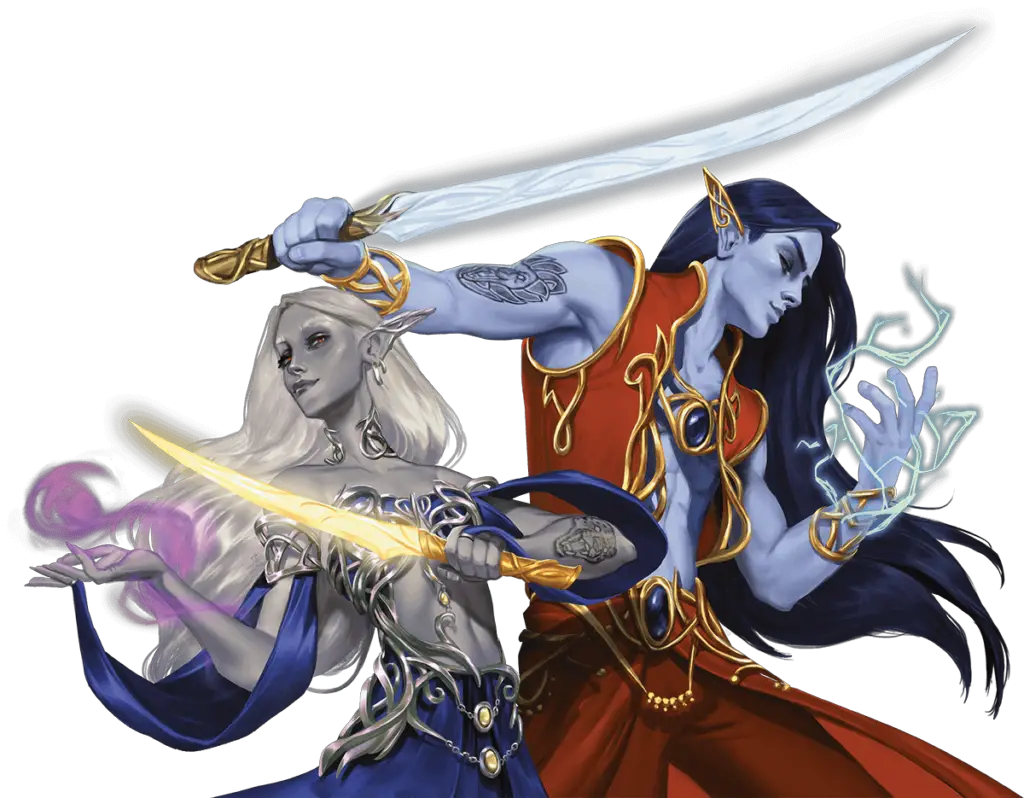
Battle Master Fighter (3) / Bladesinging Wizard (17)
Brad on Twitter suggested this concept. He likes that this combination feels like a Jedi from Star Wars. The Battle Master’s maneuvers play well with the Bladesinger. You’ll weave through combat performing feats of martial might against foes. Rallying and supporting your allies won’t be a problem. Seventeen levels of Bladesinging gives you ninth-level spells. You’ll miss out on Spell Mastery at level eighteen, but the Battle Master’s features will be helpful much earlier in a campaign.
Psi Warrior Fighter (3+) / Bladesinging Wizard (2+)
Yes-anding the suggestion above with the Battle Master, I suggest that the Psi Warrior would lean heavily into the Jedi Master concept. While limited to light armor and a one-handed weapon, I think the combination makes up for it with the bonus to AC that comes with Bladesong. You’ll roleplay the Bladesong as a manifestation of your psionic abilities. Intelligence will boost your Armor Class, incentivizing you to invest in Intelligence to improve the DC of your Psi Warrior features. Your mind is your armor!
Massive potential lies in either path with this concept. Focusing on Bladesinging or Psi Warrior will yield different skills, so build the character based on your taste. I’d personally want to get the Psi Warrior’s level-eighteen ability, Telekinetic Master. Bladesinging would be useful from level six onward due to its abilities to block damage, swap an attack with a cantrip (Booming Blade feels right for psionic attacks), and add Intelligence to attack damage. Remember, Action Surge can be used to cast two spells in a single turn if neither spell has a casting time of one bonus action. This concept is rich with possibilities, so build it how you see fit!
College of Swords Bard (3-5) / Bladesinging Wizard (15-17)
The College of Swords Bard gains Blade Flourishes to weaponize the Bardic Inspiration dice. The Defensive Flourish allows the character to boost its AC until the next round’s turn. Coupling Defensive Flourish with Bladesong will make you nearly untouchable. Flourishes will also boost the damage of your weapon attacks.
Mobile Flourish will be helpful after you get six levels in Bladesinging because you can substitute one attack for a cantrip like Booming Blade. You can use Mobile Flourish to move away from an enemy after using Booming Blade, which may mean they’re forced to move and trigger more Booming Blade damage to reach you.
Don’t invest too much in Charisma because your Intelligence will be more important. Get at least a fourteen in Charisma. The Bladesinger needs to focus on Dexterity, Constitution, and Intelligence, so it’s difficult to add Charisma in there. You’ll get more mileage out of this multiclass if you’re doing 1-2 combat encounters in an adventuring day. If that’s your kind of campaign, the low supply of Bardic Inspiration won’t matter much.
Battlesmith Artificer (3) / Bladesinging Wizard (17)
The Battlesmith at level three with Battle Ready can attack with the Intelligence modifier instead of Strength or Dexterity when wielding a magic weapon. This three-level dip in Artificer will allow a Bladesinger to focus on Intelligence over Dexterity. You can flavor this concept as a tinkerer who unlocks their innate combat potential when wielding a magical weapon, harnessing the magical energies to enter something like a battle trance. Fueled by magical energy, this Wizard is a force to be reckoned with. This theme can be explored further with spells like Tenser’s Transformation at high levels of play.
Thanks to Ahmed for pointing out this combination.
Chronurgy D&D 5e Wizard Multiclass (EGtW)
Clockwork Soul Sorcerer (1+) / Chronurgy Wizard (2+)
These subclasses share a theme of time, order, and convergence. They’re both strong, so you can choose how to level up depending on what sounds fun. I recommend going to at least level fourteen for the one you’re focusing on. You foresee alternate timelines and how they interact with the present. I believe this would be a fun concept for an Aasimar who is roleplaying like an angel interested in solely justice and order. All chaos must be brought in line with the universe’s natural progress as outlined by the gods (or at least that’s how you see it).
Armorer Artificer (3) / Chronurgy Wizard (17)
I’m picturing Kang the Conqueror, a Marvel villain from the future. He possesses expensive Apple/Microsoft hybrid tech that he uses to take over the world. The Armorer will allow you to ignore the Strength requirement of heavy armor (which it’s proficient with). You can describe your armor as possessing aberrant technology that allows you to manipulate time and space. Arcane Abeyance can be described as if your armor is an arcane vending machine as you create the mote (think of it like a jawbreaker). I also picture Syndrome’s Energy Prison tech when I imagine the Momentary Stasis ability activating from your armored wrist.
You can also level this character with an Artificer focus for fifteen levels. The Artificer levels will allow you to reach AC above thirty after magic items and infusions combine with spells like Shield.
Conjuration D&D 5e Wizard Multiclass (PHB)

Circle of Shepherd Druid (10) / Conjuration Wizard (10)
Druids can be bookworms, too! Their books might literally have worms in them. This Druid/Wizard has a Hermit background; I picture this character as an archaeologist of sorts. The discovery associated with that background can be a special book of wizardry given to the land’s guardian. This concept leans heavily into summoning creatures. Your summoned minions will receive additional hit points, become swappable when you use Benign Transposition, inflict damage with attacks considered magical, and linger as your concentration is heavily fortified.
You are determined to get the most utility out of your creatures as possible. Minor Conjuration could create a saddle or reins so you can ride a summoned beast (that’s a lightweight saddle, I know). Your spellcasting won’t heavily depend on your Intelligence or Wisdom scores either, so you shouldn’t sweat character creation to get thirteens in those stats.
Psi Warrior Fighter (8) / Conjuration Wizard (12)
Picture your psionic warrior constantly teleporting around the battlefield with near-omnipresence. Focused Conjuration will nearly guarantee you to maintain concentration on conjuration spells like Far Step. Your fighting capabilities will enable you to use medium armor with a shield. Your summoned creatures will remain at your side as you charge into battle with them. You can cast Arcane Gate to teleport your summoned creatures to a specified location as you lead them into battle. This should play out like the “on your left” teleportation scene at the end of Avengers: Endgame.
Fog Cloud would serve you well if you chose the Blind Fighting style from Tasha’s Cauldron of Everything (at the beginning of the Fighter section). The fog you conjure would hide you from sight while you can effectively see foes within ten feet of you. Unconventional synergies are available with this combination because Focused Conjuration secures concentration. Remember, Action Surge can be used to cast two spells in a single turn if neither spell has a casting time of one bonus action.
Divination D&D 5e Wizard Multiclass (PHB)

Knowledge Cleric (18) / Divination Wizard (2)
To me, this is the most mystical multiclass when it comes to divination magic. The Knowledge Cleric can effectively call on the gods to grant them knowledge, even peering into the past, the mind, and the heart. Divination Wizards can even foresee events in the form of d20 rolls. It’s just a solid concept that sounds fun to play. I used this combination for a one-shot that heavily involved investigation; the adventure was a mystery that went beyond the one-session it was meant to. The group didn’t finish the one-shot, but I enjoyed my character concept nonetheless. You can foresee rolls and consult spirits for guidance.
Clockwork Soul Sorcerer (18) / Divination Wizard (2)
Fragments of time are laid bare before you, and you bend it to your will. Portent allows you to foresee rolls to use them when the moment is right. The Clockwork Sorcerer’s abilities will allow you to manipulate rolls further when advantage and disadvantage are involved. Choose a character from popular culture to emulate for their precognitive abilities. You’ll be a dice lawyer for your party.
Battlesmith Artificer (18) / Divination Wizard (2)
Grab the Portent feature and early Wizard spells to boost your teamwork and versatility. You’re focused on being a Battlesmith, but it’s easy to grab two levels of Wizard.
Enchantment D&D 5eWizard Multiclass (PHB)

Glamour Bard (6) / Enchantment Wizard (14)
Reader Stephany suggested this combination. The idea here is to become a master manipulator. Glamour specializes in compelling others while appearing to be a grand, celestial being. Expertise in Stealth allows you to sneak about reliably. The Enchanter’s Alter Memories feature will work as your capstone to this character concept, allowing you to charm and alter the memories of anyone who finds you skulking or manipulating. This combination offers excellent synergies if you’re willing to pass up the more powerful spells of the eighth and ninth levels. It’s a masterful concept for creating a new religion of followers and adorers!
Arcane Trickster Rogue (9) / School of Enchantment Wizard (11)
I appreciate this combination of the enchanter’s Split Enchantment feature with the Arcane Trickster’s Magical Ambush feature. When you are hidden from foes, you can cast powerful enchantment spells like Hold Monster and Dominate Person while targets have disadvantage in passing their saving throws.
In my experience, the spells gained by level eleven for an enchanter are the most important (other than Dominate Person as an eighth-level spell), so this character won’t suffer on enchantment utility much. Your enchantment spells will have two targets instead of one, and targets are more likely to fail due to your ambush. If you cast Hold Monster, you’ll automatically critically hit with your melee attack damage, beefing up your Sneak Attack slices.
Enchanters are very powerful, but they rely heavily on foes failing saving throws, making enchanters perfect to pair with the Arcane Trickster’s Magical Ambush. Additionally, the Arcane Trickster may already know enchantment spells due to how trickster spellcasting works, so you’ll be fully loaded and ready to unleash powerful enchantments. This is especially powerful in games with many foes of the humanoid creature type since this character will have Dominate Person as one of its most powerful spells.
Order Cleric (1 or 6) / Enchantment Wizard (14 or 19)
It’s no secret that I love the Enchantment Wizard, so I couldn’t help but notice that Order Cleric likes to use spells of the school of enchantment. At level one, you’ll gain heavy armor proficiency for your Wizard to be tanky, a skill proficiency in Persuasion or Intimidation, and you’ll gain an ability that enables your allies to attack as a reaction. When you get to level ten as an Enchantment Wizard, you’ll be twinning spells you cast. Instead of one target for your enchantment spells, you’ll get two targets. If you need to cast Dominate Person on a foe, but you don’t have a second enemy target within range, you can cast it on your ally to harmlessly give them a reaction attack. Rogues pumping up their damage rolls once per turn with Sneak Attack will be especially grateful.
If you want to go to level six as an Order Cleric, you’ll be casting Enchantment spells as a bonus action. This isn’t super crucial for an Enchantment Wizard to utilize since cantrips and other actions aren’t super important. However, freeing up your action for other things like dashing or helping can be useful. Cleric spells are great to have even if you’re not investing much in your Wisdom score beyond a thirteen for multiclassing. I’d personally prefer to keep the multiclass as one level of Order Cleric so the Wizard can get Spell Mastery (which is especially fun for enchanters).
Evocation D&D 5e Wizard Multiclass (PHB)
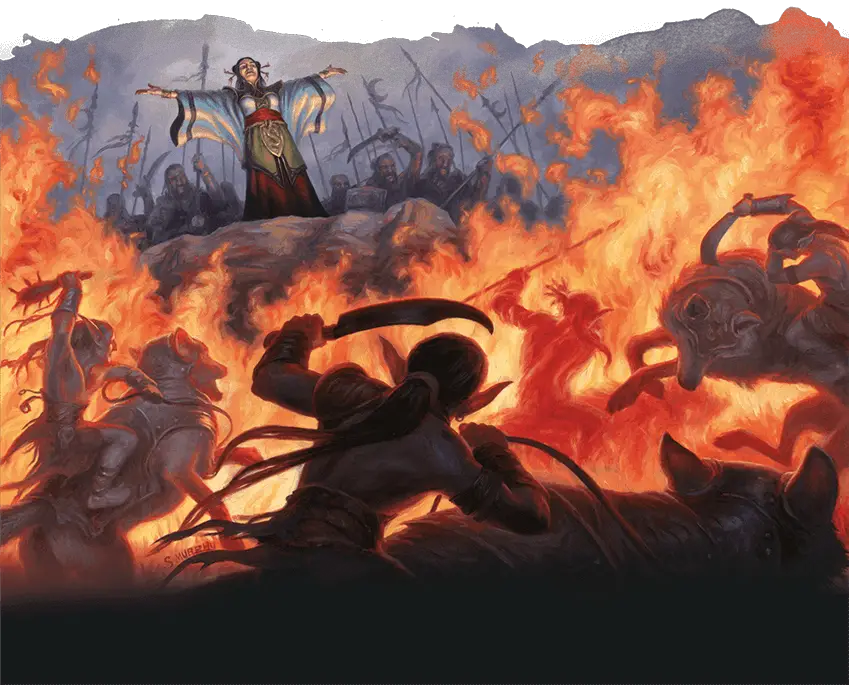
Tempest Cleric (2) / Evocation Wizard (18)
Similar to the previous combination, but the Evocation Wizard will have its own methods of maxing damage. The Tempest Cleric’s Channel Divinity will be another max-damage option. The heavy armor is a big plus. You’ll be blasting and tanking as a Wizard! Multiple options to maximize damage will feel godly every time.
Graviturgy D&D 5e Wizard Multiclass (EGtW)
Psi Warrior Fighter (3) / Graviturgy Wizard (17)
This combination can treat the Psi Warrior as a gravity-based character or make the Graviturgist into a psionic-based character. Either way works. The abilities go together thematically. Armor and weapon attacks from the Psi Warrior will pair well with the Booming Blade cantrip since you won’t get additional attacks with this build. I’m not too fond of the Graviturgist, but this is a combination you could use if you like it. Event Horizon will help you lock down enemies. Remember, Action Surge can be used to cast two spells in a single turn if neither spell has a casting time of one bonus action.
Illusion D&D 5e Wizard Multiclass (PHB)

Light Cleric (5) / Illusion Wizard (15)
This one is not optimal due to the division of Wisdom and Intelligence stats required to use each class’s spells effectively, but I like the thought of it because light and illusion meld together. What is an illusion if not light playing tricks on your eyes? I love the idea of playing as a light bender.
This character uses light to incinerate and mislead. Fourteen levels of Illusionist Wizard will allow illusory objects to gain temporary form (one of the best abilities in the game), and the fifteenth level will allow for 8th-level Wizard spells. Five levels of Light Cleric get you several fire spells, including Fireball (with your Wisdom-based DC). As I said, it’s not optimal, but manipulating light for illusions and explosions sounds cool. I think it’s neat!
Trickery Cleric (1-3) / Illusion Wizard (17-19)
Strap on your armor. It’s time to fake people out all the time to make them angry. Trickery Clerics get medium armor and shield proficiency, but an illusionist will prefer to stay out of harm’s way. Use your Channel Divinity: Invoke Duplicity as an ace up your sleeve for misleading your enemies (maybe even bait and fizzle out Counterspell from an enemy).
Blessing of the Trickster is handy for keeping yourself or an ally out of sight. Remain unnoticed while you sow illusions to turn the tides in your party’s favor. I provided a range to the level mix for my recommendation because of the pros and cons. Your choice will depend on your desires and at what level your adventure is set to end. I think an 18/2 mix is generally best.
Armorer Artificer (3) / Illusion Wizard (17)
Picture Mysterio for this concept. This Illusionist will sport heavy armor since the Armorer removes the Strength requirement to wear heavy armor models. Your armor will usually be the Infiltrator model to enhance your Stealth rolls to hide when you cast Invisibility. Your character can be described as utilizing magical illusion technology in the armor. The armor’s Defensive Field can be used when you’re not stealthy, and it can be described as a blur effect that gives you temporary hit points as it slightly redirects incoming attacks.
Genie Warlock (3) / Illusion Wizard (17)
One of our YouTube commenters suggested this one. The comment had many ideas, so I’m going to quote Patrick Handley’s comment:
“I could also see doing a human variant Genie Patron Warlock Pact of Chain with the Eldritch Secrets feat from Tasha’s for unlimited Silent Image 3-6 levels and then going Illusion Wizard for the rest 14-17. You take an imp familiar for their durability and utility and then give them your vessel probably a ring. [The] point being you flavor this one as a witch sending her familiar to keep an eye on the party having her pop in and out when she feels it’s necessary or when something they’re doing interests her.
You always have her cast Silent Image and Minor Illusion as she is leaving. It appears to the party or any onlookers that she is vanishing through a tear in space a door that is not there or that the door she does go through appears to be looking in on a witch’s hut interior. When the party opens it they find whatever space is actually behind the door, into shadows behind a tree sauntering vaguely downward and other fun and improbable ways.
Probably take the entertainer background to lend to her bravado. Pick up spells that can be delivered through your familiar. Voice of Chain Master and Familiar Investiture are musts for this build. Get plenty of control spells in addition to your main illusions and then have fun changing the battlefield with cantrips like mold earth or bonfire while you make people believe that they’re looking at a battlefield of gaping chasms and flaming walls or fields of ice when in reality they’re stepping on the spell grease falling in a five-foot hole after you shook the ground with Earth Tremor and used a quickened Mold Earth.
If one sees through the illusion and attacks, you light up the grease and give the doubters a pause. You make them question what is real. A ring of spell storing and/or needles of spell tattoo used by the familiar is probably vital to this build for the amount of concentration some of these tricks will need even better if there’s a second caster to get in on making the illusions real and dangerous.”
Necromancy D&D 5e Wizard Multiclass (PHB)
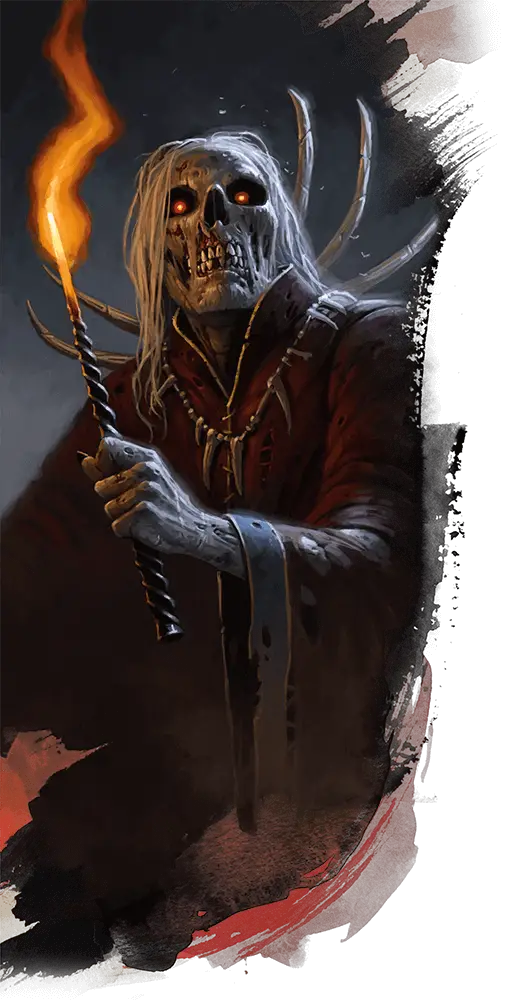
Death Cleric (18) / Necromancy Wizard (2)
The School of Necromancy has a theme that obviously aligns with the Death Domain. Beyond the theme, a Wizard twinning necromancy cantrips is beneficial. While Wizards of Necromancy possess features that aim toward an undead army, the Death Domain looks more like a reaper of souls. It wields powerful necromantic magic to drain life. We actually have an entire article about different builds for necromancers in D&D 5e. This necromancer brand will definitely want the 17th-level Death Domain ability to twincast targeted necromancy spells up to 5th level.
Death Clerics can afford to invest two levels in Wizard to gain the Grim Harvest subclass ability. Since both classes are full casters, spell slot progression won’t be hindered, and the Cleric will have access to its 9th-level spells. The character will have martial weapon proficiency, allowing attunement to diverse magic weapons. Those weapons can be used with Wizards cantrips like Booming Blade and Green-Flame Blade to deal impressive damage.
Empowering martial melee attacks with cantrips while twincasting ranged necromancy cantrips, this character has multiple fighting styles to adapt to diverse combat encounters. Unfortunately, you’ll need to invest in Intelligence to get a score of 13 to make this multiclass happen. Still, it makes sense mechanically and thematically if you want to reap mortal souls to sustain yourself.
My favorite idea for this combination is to combine Grim Harvest and Spirit Guardians (necrotic damage choice). This allows you to heal yourself once per turn when the Spirit Guardians spell kills an enemy. The Spirit Guardians spell deals damage on a creature’s turn, and Grim Harvest works once per turn (it doesn’t have to be your turn).
Armorer Artificer (3) / Necromancy Wizard (17)
This is the concept I’d use if I wanted to be a life-sucking Necromancer. I adore the idea of Grim Harvest working with Vampiric Touch to restore heaps of hit points to the Necromancer. Still, the problem is that Necromancer Wizards aren’t durable in close quarters. Grim Harvest also doesn’t help if you lose hit points faster than you heal. That’s where the Artificer comes in. Sharing the need for Intelligence between both classes is a huge benefit. Armorer Artificers gain proficiency with heavy armor, allowing you to properly defend yourself while using Vampiric Touch to sap your enemies’ life force. You won’t spread your stats thin either since Armorers ignore Strength requirements for heavy armor. Charge into battle like the wannabe vampire you are!
Use infusions to augment your armored defenses and life-stealing attacks. Enhanced Arcane Focus infusion gives your Vampiric Touch spell attacks +1 to damage and attack rolls. The Enhanced Defense infusion boosts your AC with +1. You can learn Cure Wounds for basic healing utility. Learn spells like Soul Cage to declare, “Your soul is mine!” You can play as Shang Tsung with this soul-stealing concept if you include transformative magic like Alter Self in your spellbook.
Circle of Spores Druid (6) / Necromancy Wizard (14)
These subclasses specialize in the manipulation of undead creatures and animated bodies. You can lean either way for the thematic approach to this concept, but the spore concept seems most unique. You can be the type of necromancer who describes necromancy spells as if they involve plant manipulation. Your necrotic damage spells are dealt from the land, reaching up to drain a target of its life. Halo of Spores gives you passive damage that scales as you level up (based on character level, not Druid level).
You’ll focus on your Intelligence, so Halo of Spores won’t be reliable damage. It’s a reaction option if you have nothing better for your reaction. You’ll gain Fungal Infestation as another reactionary option to animate a nearby humanoid/beast as it dies immediately. This isn’t an optimal combination, but these two subclasses share a common theme.
Order of Scribes D&D 5e Wizard Multiclass (TCoE)

Assassin Rogue (13) / Order of Scribes Wizard (7)
This one was tricky, but I realized I wanted to make a concept akin to Death Note. You’ll pretend you can write a target’s name in your spellbook to bring death to their doorstep. You use Manifest Mind to spy on the nearby target (within 300 feet). The Manifest Mind can adopt the visage of an Oni to emulate a god of death’s face. While Manifest Mind has found your target, cast Misty Step as if you are within striking distance of your target. Use your action to attack and surprise your target after you teleport. You become a terrifying spellcaster who wields a blade masterfully to deal death to whoever crosses you. The Death Note concept can be further played with additional Wizard levels to learn Dream so you can haunt and harm targets while they sleep.
Tempest Cleric (2) / Order of Scribes Wizard (18)
I like this combination because it allows the Scribe Wizard to transform spell damage into lightning and thunder to be maxed out by the Tempest Cleric’s Channel Divinity. Clerics make great starting classes due to their proficiencies and increased hit points. Being able to cast low-level Cleric spells is fantastic. You’ll be like a destructive meteorologist.
Alchemist Artificer (14) / Order of Scribes Wizard (6)
(Inspiration Source) I like this combination because it allows the Alchemist to use its damage boosts from Alchemical Savant by morphing spells into different damage types. This fits well with my mad scientist concepts from my Artificier feats article. You can also create heaps of spell scrolls with this combination! You could alter this combination to a 10/10 level split between the classes to stack Master Scrivener and Magic Item Adept for extremely fast spell scroll crafting.
Transmutation D&D 5e Wizard Multiclass (PHB)
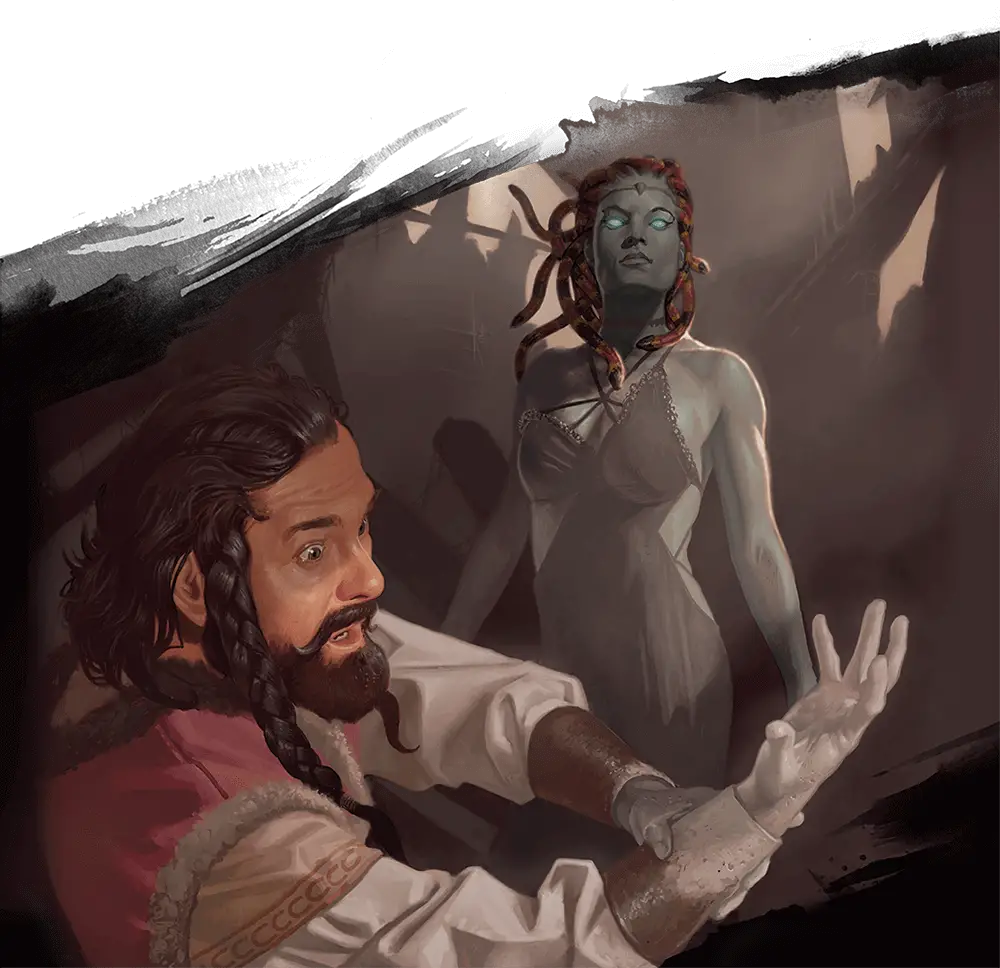
Forge Cleric (6) / Transmutation Wizard (14)
You’re going to focus on gaining resistance to elemental damage. Choose a race with resistance to some damage, then gain more damage resistances from the Forge Cleric (fire) and the Transmuter’s Stone (elemental damage). It’s just a cool way to gain elemental damage resistance. Other subclasses can gain resistance to damage, but I like this combination because the core and secondary classes are themed around creation and alteration. The proficiency in Smith’s Tools will help with the Fabrication spell, too. Tool proficiencies allow for intricate creations when casting Fabricate.
Knowledge Cleric (2) / Transmutation Wizard (18)
Fabrication time! I like this combination for one reason: you can use Channel Divinity: Knowledge of the Ages to become proficient in any tool for ten minutes; while proficient in the tool of your choice, create something amazing using the Fabricate spell. Sure, the Fabricate spell has a casting time of ten minutes, so technically, you’ll be 6 seconds short, but I say that’s good enough. I chose Transmutation as the Wizard school due to its thematic fit, but any school will do.
Beyond this Fabricate combination, the Wizard will gain other proficiencies that use double their proficiency bonus, medium armor, and shields. If you want to create works of art or complicated machines with the Fabricate spell, you might also consider getting levels in Rogue to gain Expertise in Investigation (find a buyer) and Persuasion (get the best price) skill checks. Gotta close the deal!
Alchemist Artificer (3) / Transmutation Wizard (17)
You’re the quintessential experimenter of potions and concoctions. The Alchemist at level three gains Healing Word. You’ll also access Cure Wounds, making you a useful healer for your party. The Artificer’s armor and shield proficiencies are useful for defending yourself. Infusions will allow you to make an Alchemy Jug and/or Bag of Holding for your experimental supplies. This Transmuter will finally be proficient with Alchemist’s Supplies, too. I kept the Transmutation Wizard levels at seventeen to obtain ninth-level spells.
You will enjoy the Experimental Elixir feature. This special elixir can heal, buff, and transform an ally for a time. A minor flight effect is included in the possible elixir effects. You can also pick interesting cantrips like Guidance and Spare the Dying that would normally be inaccessible to a Wizard. This combination will make the Transmuter far more interesting to play.
War Magic D&D 5e Wizard Multiclass (TCoE)

Ancestral Guardian Barbarian (9) / Echo Knight Fighter (4) / War Magic Wizard (7)
This character concept known as the Guardian will initially appear strange, but it’s an effective build to tank for self and allies as long as you understand its tactics. This concept possesses narrative and thematic richness to make the character enjoyable for roleplaying. This Guardian build comes from Treantmonk’s Temple, and he has a video devoted to explaining it.
Basically, you’ll use deflection and damage prevention while placing enemies in disadvantageous positions. I highly recommend checking out Treantmonk’s channel and subscribing to it for anyone who likes to learn about optimization techniques.
Forge Cleric (1) / War Magic Wizard (19)
Many players find the Wizard’s level 20 ability underwhelming, so you might as well take a level in Cleric early on to gain bonus armor and tool proficiencies and a Domain ability to imbue weapons and armor with +1 bonuses magically. All Wizards can benefit from armor proficiencies, especially if they’re willing to invest in Strength 13+ and Wisdom 13.
Having armor will negate the Mage Armor spell’s need, allowing Wizards to choose other spells and save a 1st-level spell slot. Heavy and medium armors have higher AC anyway. I recommend starting the game as a Forge Cleric to get higher hit points and better proficiency options. The only Wizard subclass that probably won’t benefit from this combination is the Bladesinger. War Mages can bolster their AC to couple well with the Forge Cleric’s medium or heavy armor. Gaining the Cleric’s first-level spells is useful for supporting allies with Bless and Healing Word.
Armorer Artificer (3) / War Magic Wizard (17)
I think I should’ve named this article “Why Wizards Should Multiclass as Artificers.” This is a remix of my similar recommendation for the Abjuration Wizard. Your durability increases as your AC goes from low teens to high teens. Arcane Deflection will boost your defenses further. You may also access spells that Wizards couldn’t normally learn. Casting Cure Wounds as a Wizard is awesome. The Wizard is already hyper-versatile, and healing options will broaden what you can accomplish.
Psi Warrior Fighter (18) / War Magic Wizard (2)
Similar to the Bladesinging version of this concept, this character focuses on its psychic powers. Arcane Deflection functions as a telekinetic force protecting you from harm. You can use Arcane Deflection every turn, and the downside is merely limiting your spellcasting to cantrips for your next turn after using it. You gain Booming Blade as a psionic force that you inflict on foes when they move, though you won’t use it as often when you get to higher levels with Extra Attack.
Consistently adding +2 to AC and +4 to saving throws will make you incredibly durable. Don’t get swarmed, and you’ll be fine. Remember, Action Surge can cast two spells in a single turn if neither spell has a casting time of one bonus action.
Battlesmith Artificer (18) / War Magic Wizard (2)
War Magic’s Tactical Wit and Arcane Deflection features are never bad. They synergize well with the Artificer’s Int-based abilities, particularly the Battlesmith, who focuses on Intelligence for attacks with magic weapons. It’s important to act early in the initiative order of combat with Tactical Wit. Arcane Deflection is unlimited to how many times it can be used, and +4 to a saving throw is always good.
War Magic Wizard (3) / Monster Slayer Ranger (15) / Fighter (2) or Artificer (2) or Paladin (2)
I want this character to be a mage slayer. They pass saving throws, thwart teleports, and punish spellcasting. I would make this a melee character, too. I would grab the Mage Slayer feat because the class features don’t directly conflict with it, and your options can be filled out. You can cast silence and grapple an enemy with the Fighter option for Action Surge.
The character must take turns early in combat to make this work with Slayer’s Prey. The War Magic Wizard’s Tactical Wit can help with Initiative rolls.
Choose between Fighter or Artificer for two more levels. Artificer Infusions can be great for boosting your grapple checks and concentration saving throws. Fighters get Action Surge and another Fighting Style. Paladins get Divine Smite!
Conclusion

What recommendations did you like? What are your favorite multiclass options for Wizards? Cast Sending in the comments section to share your ideas! I might add your recommendations to the article. Thanks for reading. Good luck with your wizardry.
Before you go, we have plenty of content about D&D 5e. Here are categories and articles you may enjoy:
- Multiclassing Combinations by Class (one of our most popular articles)
- Most Popular Articles
- Rating Each Wizard Subclass
- Roleplaying Tips
- Multiclassing Concepts
- Spellcasting Guides
- Rating Barbarian Subclasses
- Rating Rogue Subclasses
- Rating Cleric Subclasses
You can also visit our homepage for our most recent articles. Happy adventuring!




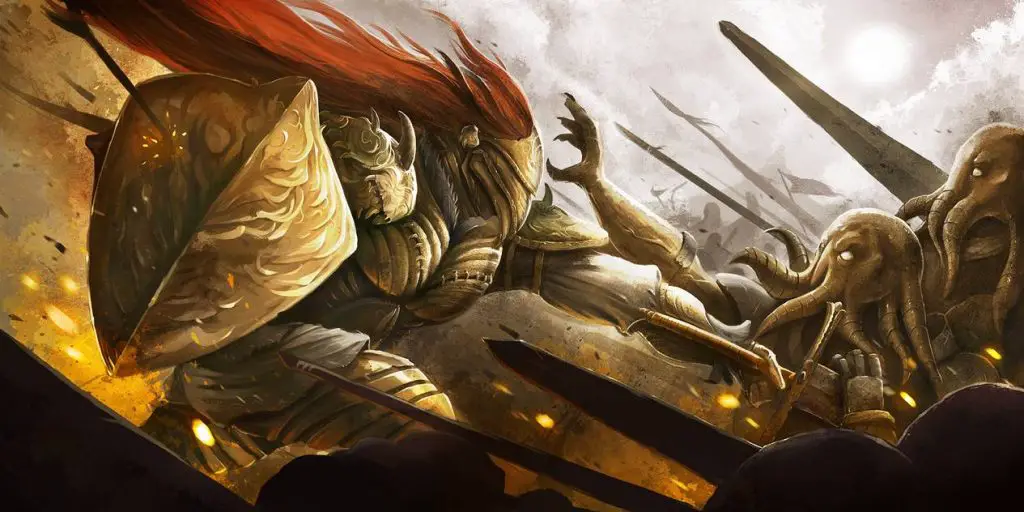
After reading this, I’ve loved it along with the others you have made. I’m looking forward to seeing a a multiclass page for the other classes. Keep up the amazing work
Thank you, Kiba! I appreciate the positive feedback. I plan on writing articles like this one for every class. They require heaps of time to write as I need need to comb through everything to craft useful suggestions! Haha, for that reason, I am pleased to hear that these articles are worth the time to create. 🙂
I love the trickery illusionist combo. In particular, I think that making your illusory self cast illusions is a recipe for disaster. So naturally I love it.
Thanks for putting my enchantment suggestion on this list by the way.
Thank YOU for the cool suggestion!
I agree that casting illusions through an illusory self creates mischievous opportunities.
I’ve played a lot of wizards and one of my favourite multiclasses is the Chronurgist with three levels of Divine Soul Sorcerer. A lot of the low level cleric spells that the divine soul has access to don’t require a save and upcast really well. You have healing for an emergency and perhaps most cheekily of all, you can give two characters two buffs at the same time using Arcane Abeyance and Twinned Spell. Sending the barbarian and the paladin into the boss fight with Haste AND Bless on both of them is great fun! You could also share the love around and haste or polymorph four characters. Taking the Metamagice Adept feat nets you an additional metamagic and two more sorcery points. With this you can now pull of the quickened Mind Silver followed by the heightened save or suck spell, which with the addition of Convergent Futures (forcing a re-roll with your reaction) gives your big spell a much better chance of coming off.
Another great combo to remember in high magic settings is that mithril armour is an uncommon item and gets you out of both the stealth penalties and the strength requirements of some medium and heavy armour. If you have the type of DM who lets you go shopping for whatever uncommon items you fancy provided you’ve got the gold, this is an excellent reason to invest in WIS rather than DEX and pick up that one level dip in forge cleric. Give your shield +1AC using Blessing of the Forge and you’ll have an AC of 21 and access to a bunch of useful spells like detect magic, bless, sanctuary, identify and healing word. You could even make your own mithril plate using the fabricate spell and the tool proficiencies you get from your forge cleric dip.
Hi Al!
Adding Cleric spells to a Wizard is always cool by me. Using the Divine Soul Sorcerer is a tricky way to do it! And I forgot Mithril Armor doesn’t have strength requirements, which would be cool to use with the Forge Cleric.
I hadn’t considered Arcane Abeyance as compatible with Twinned Spell, but I could see it being ruled that way! That makes it even better if the DM is up for it.
I hope to see more of these for the other classes that haven’t been done, as they’re really cool and helping me think of new ways to make characters! Good job!
Hi Matt, that’s very encouraging, thank you! It’s slow going for me because I want to do a good job providing ideas, but I plan to eventually have one of these multiclassing articles for each class. 🙂
You forgot about the Battlesmith Artificer (3) – Bladesinger Wizard (6+)
This allows you to add your INT modifier instead of your DEX.
Hi Ahmed, I added this suggestion to the article. Thank you!
what about school of necromancy with shadow magic sorcerer?
That would certainly be thematic!
Love that Illusionist / Genielock!
It’d be really neat with the [MoM] Hobgoblin for even more shenanigans!
I’d like to suggest a special to the Deep Gnome Abjurer with Svirfneblin Magic as an UPGRADE to the Abjuration / Hexlock as a footnote. It will allow you to take advantage of the Medium Armor in later levels. Seeing as you can’t cast Mage Armor on a creature that is wearing armor.
Just an idea! Cheers!
Thank you, Scuba Steve! 😛
I’ll add that idea because that’s a unique idea I hadn’t heard before.
So, I’ve commented on your list of best wizards spells, and I mentioned that I have only ever played sorcerers or wizards, while occasionally multi-classing in warrior levels. With wizards, I often play as an evocation, abjuration, or necromancy wizard, and multiclass three to five levels as a fighter. I have never considered multi-classing as a tempest cleric when playing an evocation wizard, but I see the compatibility. I might do that next campaign. Thanks Flutes!
Sure thing! Cleric dips for even just 1-2 levels can be super helpful for Wizards 🙂